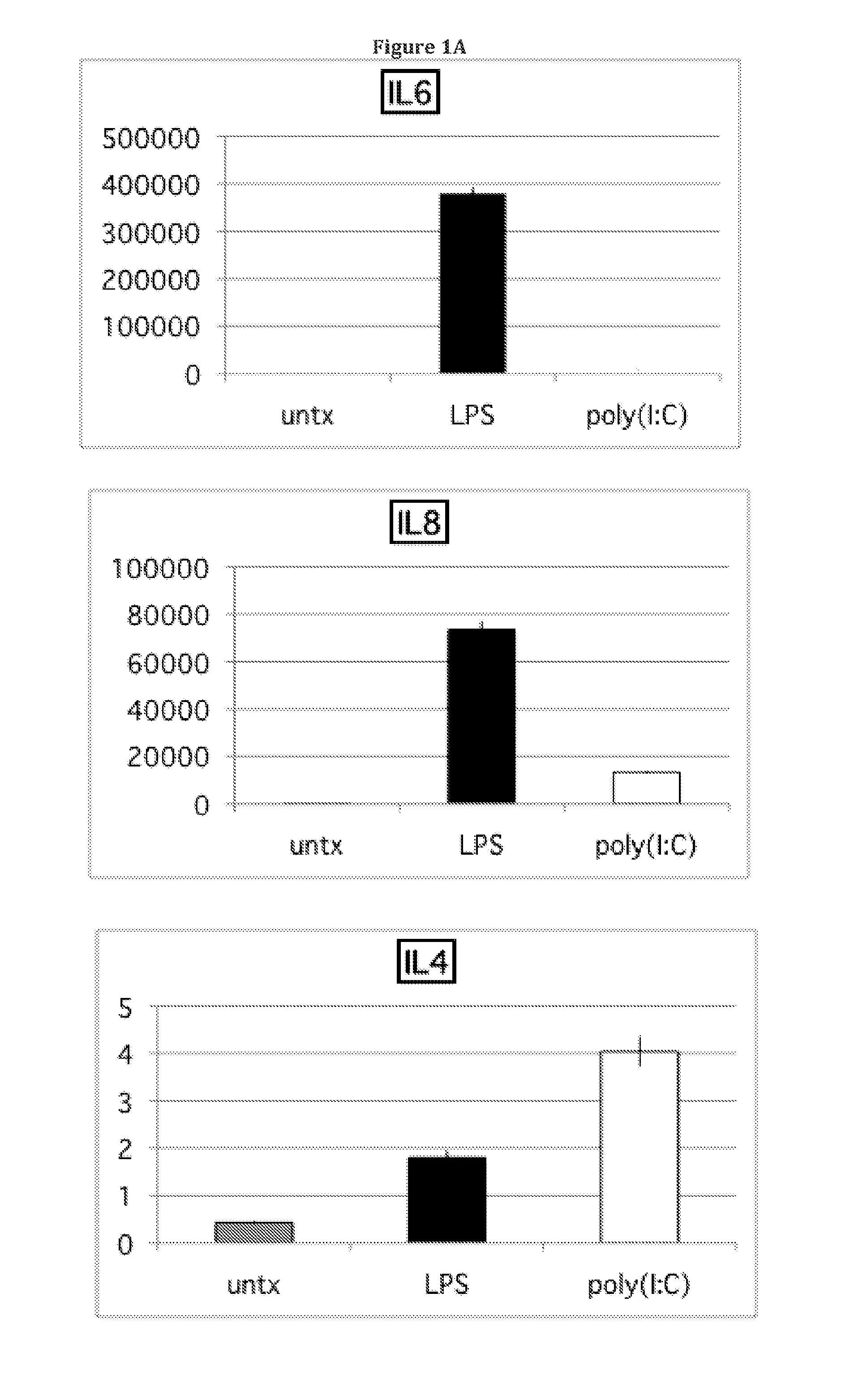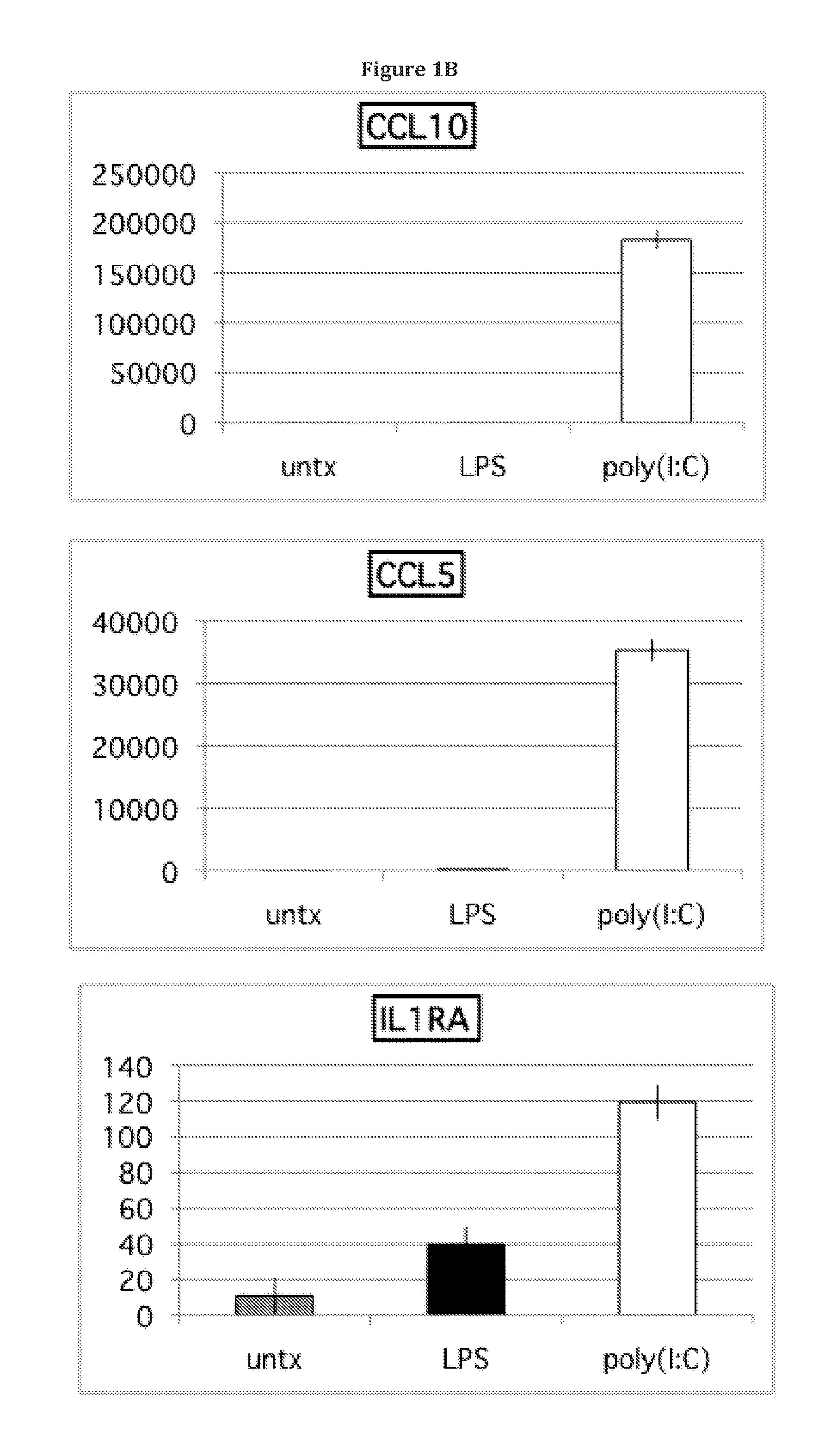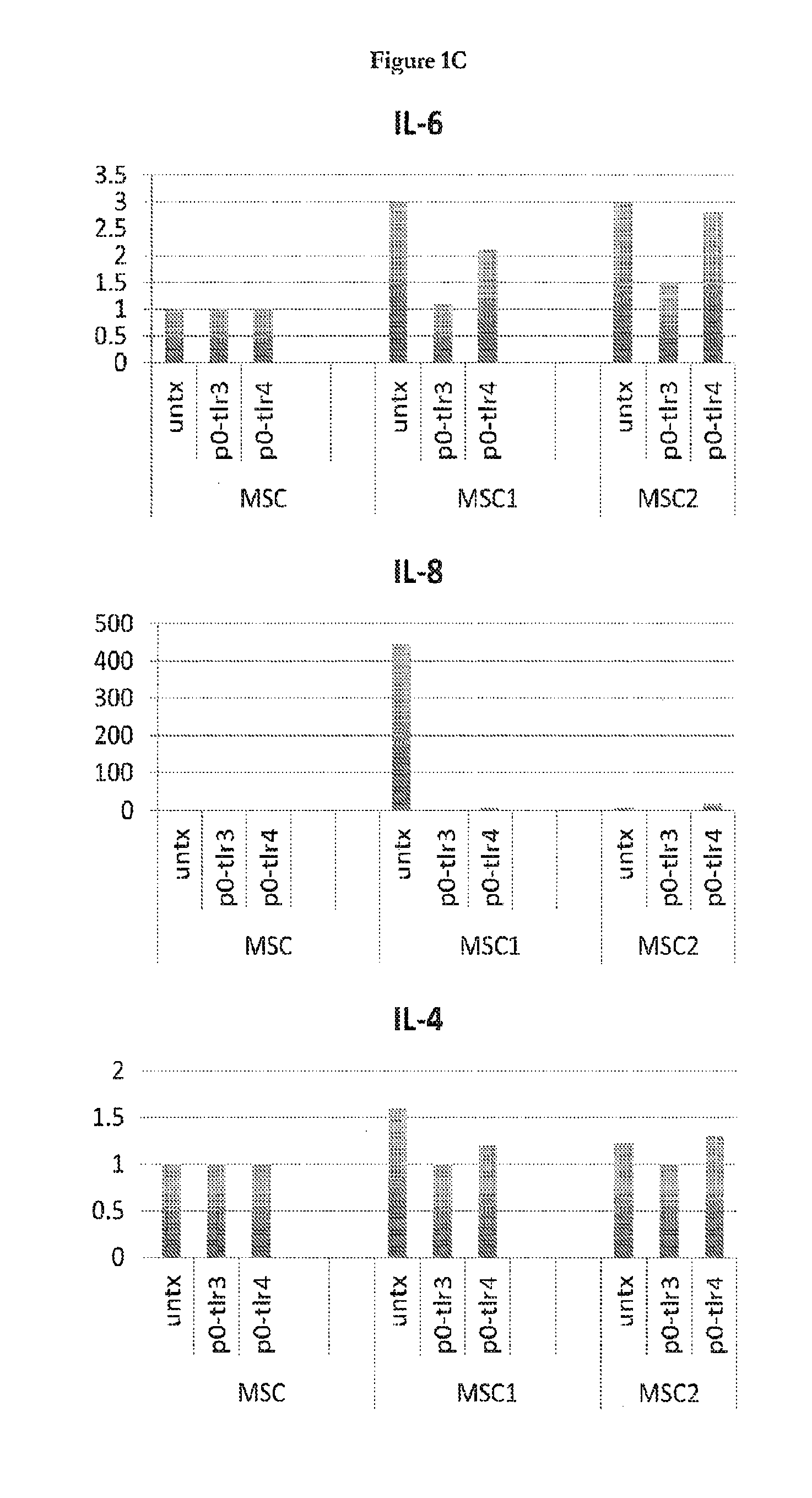Mesenchymal stem cells and related therapies
a technology of stem cells and mesenchymal cells, applied in the field of mesenchymal stem cells, can solve the problems of inability to predict the patient's behavior of the infused mix of cells, costing the u.s. economy at least $128 billion per year in medical care and lost wages, and many human diseases are caused or exacerbated. it can reduce the secretion of tgf1, increase the expression of jagged 1 and increase the secretion of il
- Summary
- Abstract
- Description
- Claims
- Application Information
AI Technical Summary
Benefits of technology
Problems solved by technology
Method used
Image
Examples
example 1
Cytokine and Chemokine Secretion Patterns Following TLR3 or TLR4 Activation of hMSCs are Consistent with Divergent Immune Modulating Effects by these Agonists
[0089]The present disclosure extends previous observations of the effect that TLR signaling has on the immune modulating property of hMSCs, and explains the conflicting reports in this field. The applicant typically used a TLR-priming protocol that comprises incubation with LPS (10 ng / mL) or poly(I:C) (1 μg / mL) added as the hMSCs agonists for TLR4 and TLR3, respectively, for about 1 hr prior to washing, and further 24-48 hr incubation in growth medium. Without wishing to be bound by theory, the incubation time (about 60 minutes) and minimal TLR agonist concentrations used here mimic the gradient of danger signals that endogenous MSCs encounter and respond to at a distance from the site of injury. The conditioned medium was collected and analyzed with Bio-Plex Cytokine Assays (Human Group I & II). TLR3 stimulation in hMSCs led t...
example 2
The Duration of TLR Agonist Exposure Affects Migration and Invasion Capabilities of Treated hMSCs
[0091]Apart from the distinct effects of TLR3 and TLR4 activation on cytokine / chemokine secretion, the applicant showed that TLR activation promoted hMSC migration, while Pevsner-Fischer (2007) reported that TLR activation in murine MSCs inhibited the migration of these cells. The hMSC migration assays were performed again, but with varying incubation times. Thus, migration by TLR-primed hMSCs was analyzed following initial exposure to LPS (TLR4 ligand), poly(I:C) (TLR3 ligand), CCL5, or TNFα for an hour or 24 hr prior to loading the cells on the top chamber for transwell migration assays (see, e.g., FIG. 2). Stimulation for 1 hr of TLR3 and TLR4 within hMSCs promoted migration and invasion towards 16.5% serum containing medium when compared to untreated samples. However, 24 hr incubation with these ligands suppressed migration and invasion of the treated hMSCs. By contrast, this longer ...
example 3
Varying Effects of TLR3 and TLR4 Stimulation on hMSCs Adipogenic and Osteogenic Differentiation Potential
[0093]The effect of TLR3 and TLR4 activation on the tri-lineage (cartilage, bone, fat) differentiation capabilities of hMSCs was also measured but, as described above, using reduced amounts of TLR ligand. The hMSCs were simultaneously induced to differentiate in the constant presence of TLR3 (1 μg / mL poly(I:C)) and TLR4 agonists (10 ng / mL LPS) maintained for the duration of the differentiation assays in the inductive medium. With this method, an inhibition of all bone, fat, or cartilage (not shown) programs was noted after TLR3 activation of hMSCs (FIG. 3). Simultaneous TLR4 activation of hMSCs inhibited adipogenesis, stimulated osteogenesis, and did not affect chondrogenesis (not shown).
[0094]As shown by FIG. 3, TLR4 activation promotes bone differentiation and inhibits fat differentiation in hMSCs. Methods: The hMSCs were induced (+) to differentiate in the presence of TLR3 and...
PUM
| Property | Measurement | Unit |
|---|---|---|
| concentration | aaaaa | aaaaa |
| concentration | aaaaa | aaaaa |
| concentration | aaaaa | aaaaa |
Abstract
Description
Claims
Application Information
 Login to View More
Login to View More - R&D
- Intellectual Property
- Life Sciences
- Materials
- Tech Scout
- Unparalleled Data Quality
- Higher Quality Content
- 60% Fewer Hallucinations
Browse by: Latest US Patents, China's latest patents, Technical Efficacy Thesaurus, Application Domain, Technology Topic, Popular Technical Reports.
© 2025 PatSnap. All rights reserved.Legal|Privacy policy|Modern Slavery Act Transparency Statement|Sitemap|About US| Contact US: help@patsnap.com



